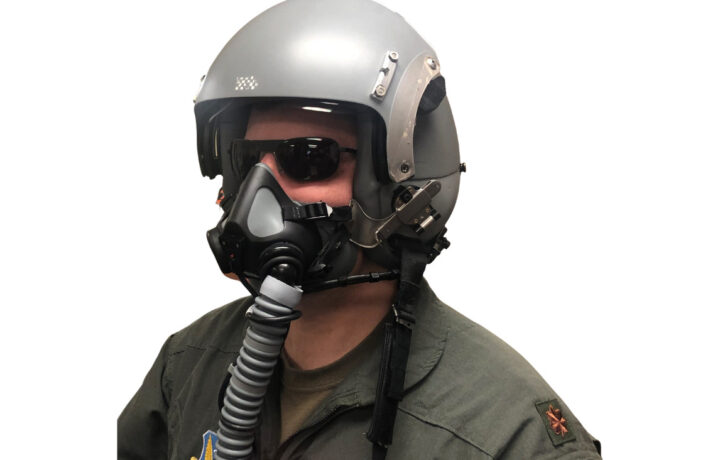Tom Cruise may have played a U.S. Navy pilot in the Top Gun films, but his character’s iconic aviator sunglasses – a favorite of President Joe Biden – actually had their origins with the United States Army Air Corps before the Second World War. The first true aviator glasses were commissioned by American Optical, a company that had been around since 1833!
Today, the choice of aircrew eyewear is about more than just cutting down glare from the sun – while arguably making the aviators evoke a bit of cool in the process. Now, the glasses must truly protect the vision of the pilots from a number of threats.
To that end, the Air Force Life Cycle Management Center’s Human Systems Division announced this week that it is in the process of upgrading protective eyewear for aircrew operating various U.S. Air Force aircraft around the world. This effort is comprised of eight different devices.
Known as the Block 3 family of products, the eyewear will help provide protection from laser threats while further introducing a combined laser and ballistic protection capability for the first time.
“The health of the eye is so important to our pilots,” explained Capt. Pete Coats, lead program manager for the Human System’s Division’s Aircrew Laser Eye Protection Program, via a statement.
“The consequences of getting lasered without having proper protection could not only prevent the pilot from flying and landing an aircraft safely, but it could also cost them their career,” added Coats. “So, our goal is to ensure the right eyewear is available to everyone.”
Quite the Spectacles
The new eyewear devices will include separate day and night spectacles, ballistics spectacles, and even visors designed to integrate with night vision goggles. The type of eyewear protection aircrew will receive will depend on the mission.
“If flying low and slow or hovering like a helicopter or CV-22 Osprey, aircrew would prefer to have ballistic protection as well as laser protection,” said Mark Beer, Aircrew Laser Eye Protection Program deputy program manager. “However, if you’re in a fighter aircraft or flying in a bomber at high altitude, the chances of you needing ballistic protection are not nearly as high.”
Along with improved protection, the night eyewear will allow more natural light through the lens, increasing visibility for crew members.
A key part of developing the eyewear has been partnerships with various stakeholders.
“We’ve worked very closely with the Air Force Research Laboratory on this effort,” Coats continued. “They [AFRL] were instrumental in the pre-engineering manufacturing and development phase and experiments with dye and filter technologies.”
Beer further explained that the team worked with the U.S. intelligence community, which provided an assessment of the threats facing aircrew members. That information was employed to determine what was needed to protect against and which eyewear protection technologies we needed to pursue.
More than 42,000 devices will be fielded to Air Force units by 2027.
The Air Force noted that the devices will be available for all aircrew except for those operating U-2 and F-35 Lightning II aircraft, the Air Force announced.
Aviators for the U-2 and F-35 are already outfitted with specialized helmets – and as previously reported, the Lightning II helmets are custom-built for each pilot, costing upwards of $400,000.
Commercial Models – Maybe Not
During the Second World War, the AN6531 military sunglasses became the standard for many U.S. servicemembers. These were produced in large quantities for both pilots and sailors, and meant to fit the standards of the U.S. Army Air Corps and the U.S. Navy.
These featured the teardrop shape that we know – and many love – today. The color of the lenses was originally green, but was changed to a rose smoke color to better protect pilots’ eyes from sun glare. Moreover, the nickel plated frame was made out of copper alloy so that it wouldn’t interfere with compasses.
General Douglas MacArthur was among the World War II heroes to be photographed wearing the sunglasses. The pattern was produced by a number of companies, including American Optical, Bausch & Lomb, The Chas, Fisher Spring Co., Wilson Optical, and Rochester Optical Co Frame. They were first patented as the “Ray-Ban Aviator,” a name that is as iconic as the F-14 Tomcat that Cruise flew in the original Top Gun, and maybe even more so.
Due to their popularity with pilots, after World War II, the aviator glasses because popular with civilians. Marlon Brando donned them in the 1951 film The Wild One, which only served to boost their popularity.
It is unclear if the latest military glasses will be as iconic, or if they’ll ever be available widely to civilians. However, a few movie appearances might be all it takes for the latest eye protection to catch on with the masses.




